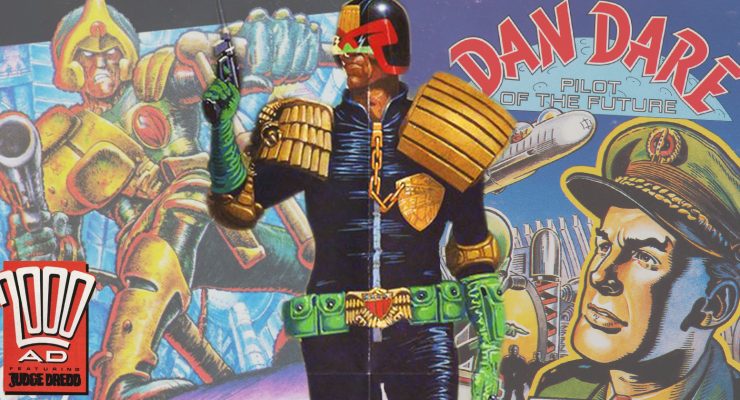Zeb Larson reviews Wicked + Divine #6…
THE FAUST ACT is over Welcome to FANDEMONIUM. The second arc of THE WICKED + THE DIVINE begins in its traditional manner (i.e. a ludicrous pun.) We’d say something like “nothing will ever be the same again” but if you think about it, you can say that about literally everything, ever. Er…also some comic story. Probably.
At some level, I feel like Wicked + Divine #6 is the first issue of the series, as Gillen and McKelvie have said that the first arc functioned as something like a prologue. Laura is starting to study some of the mysteries of the pantheon, along with a new friend. Along the way, we get a little bit of backstory on the pantheon and Laura’s life. There will be some spoilers ahead, so read on at your own discretion.
Laura is still getting over the death of Luci and her ability to light a cigarette with a snap of her fingers. Unfortunately, she hasn’t been able to recreate that particular feat, or any other. As she shuffles through her now-muted existence, she gets a phone call from a deity who wants to meet: Inanna, the Sumerian goddess of fertility (in male form). Both Innana and Laura have some common concerns, especially as they relate to the pantheon and to the assassins from the first issue. As Laura puts it, Innana is going to be her “Deep Throat,” and she’s going to work and delve deeper into this problem.
There’s some discussion about past pantheons that is interesting, and I wish that it got more space in this issue. Somebody mentions the pantheons of the 1640s and 1920s as being particularly memorable, and I would be curious to see just what this looked like. How has culture through the ages been shaped by this process? Are there more memorable cycles than others? The 1920s certainly syncs up the Jazz era, and as a Jazz fanatic I’d be interested to see I’m also sort of confused because those two dates are 280 years apart, which doesn’t fit into cycles of ninety years, but that’s a pedantic point in the grand scheme of things.
There’s also a discussion, set a few years prior to the book, between Laura and a festival organizer on whether her generation deserves a pantheon. Laura’s generation is “lazy and entitled,” according to this older man, and accordingly, it does not deserve a pantheon. Laura in turn angrily claims that he’s spent too much time studying past cycles and that he lacks faith. In her words, “you’ve learned so much you know nothing.” Taken at face value, this is simply yet another exchange between an older and a younger person, neither of whom can understand the other. This kind of angry conversation is itself a cliché, and given that Laura is correct, it might come across as just another cranky adult not understanding the kids these days.
But I do think that there’s another point to the exchange, one that is more interesting. The organizer is a man who claims to have spent his life studying these cycles and has the authority to speak about them. Laura, on the other hand, is simply a fan, and it wouldn’t be unreasonable to say she speaks for a great many people. It is, in effect, an argument between critics/scholars and the masses, and the argument is really about who owns culture. In the critic’s view, the current generation can’t produce a worthwhile pantheon because of its flaws. His vision of culture, what he has studied, is meaningful and important. Yet he can’t see the pantheon which is imminent, which implicitly questions the value of studying something like this. It’s a pretty barbed attack on critics and the idea of rational study of both pantheons and culture. While I can’t help but take it a bit personally, it is an interesting idea.
I have a love-hate relationship with this book, in that I feel as though I’m constantly disagreeing with the authors. But they’re just so much fun to disagree with and they raise so many interesting points that I keep on coming back to them.
Zeb Larson
https://www.youtube.com/watch?list=PL18yMRIfoszFJHnpNzqHh6gswQ0Srpi5E&v=Z2vq4CudKRk&feature=player_embedded











